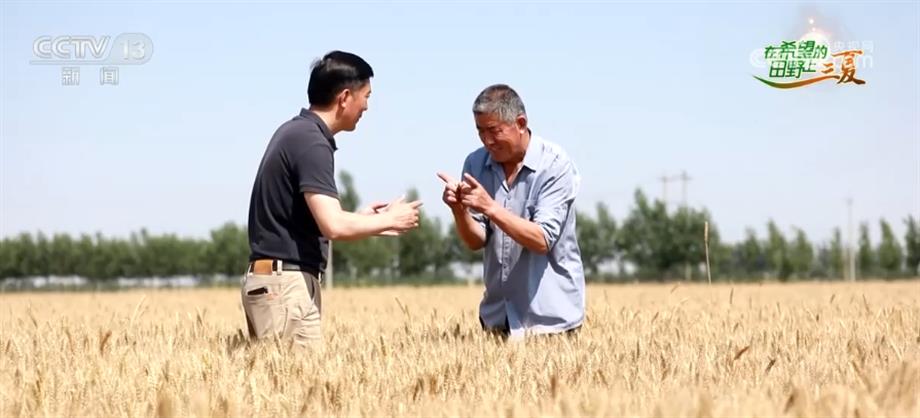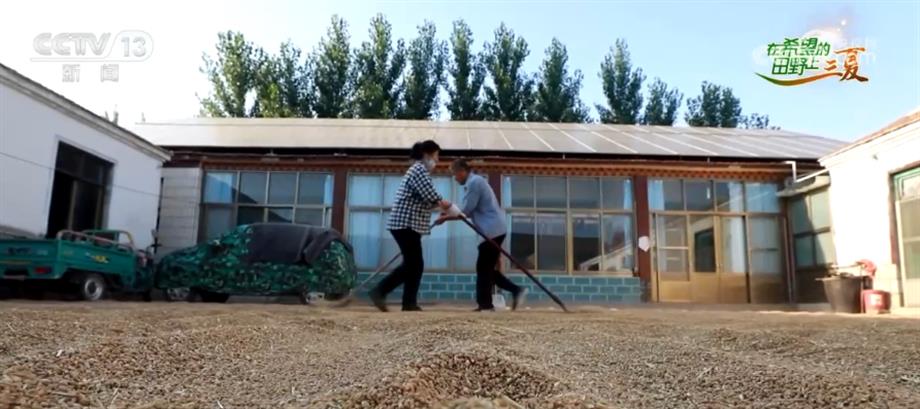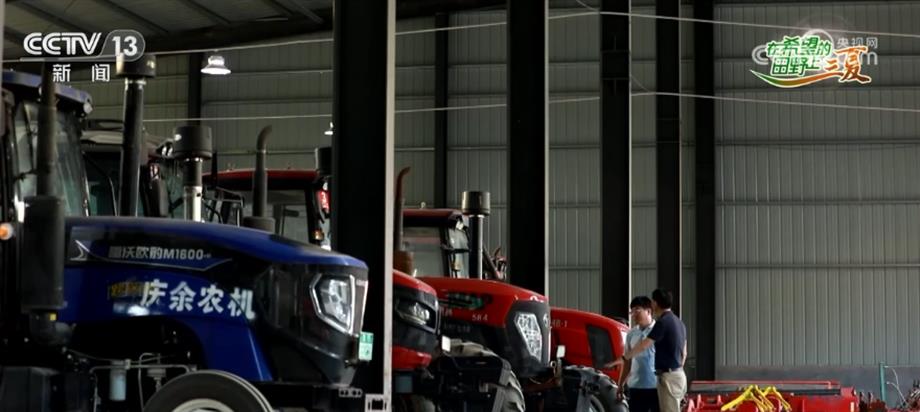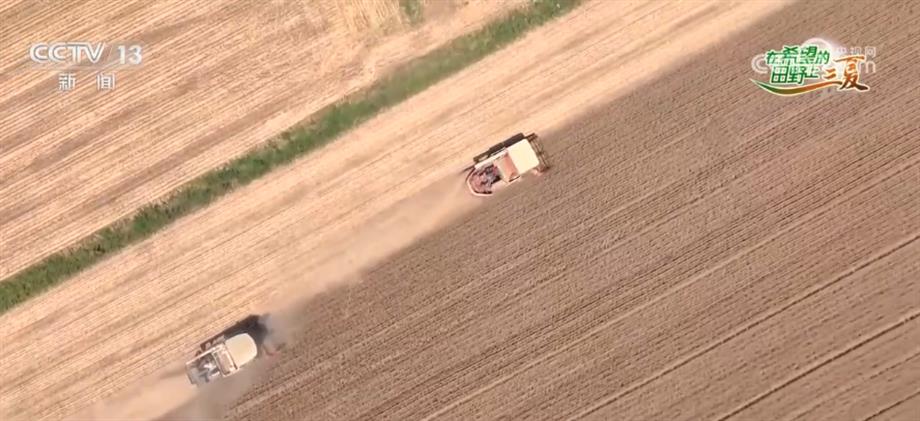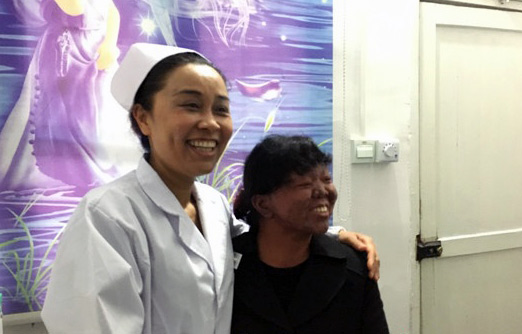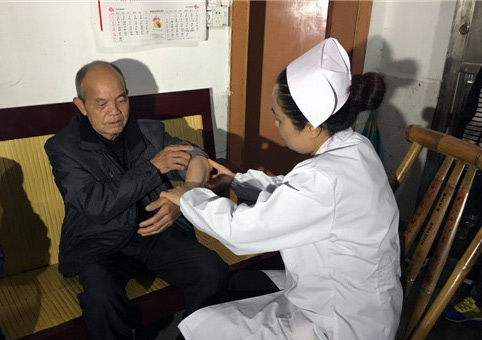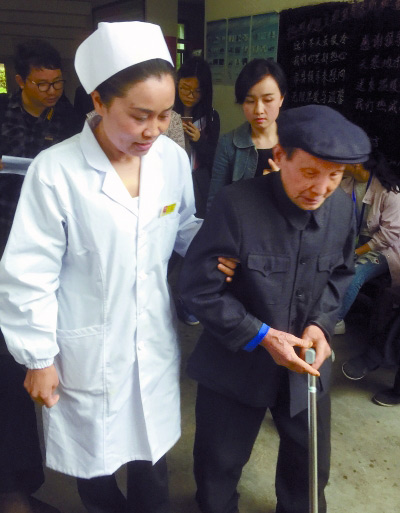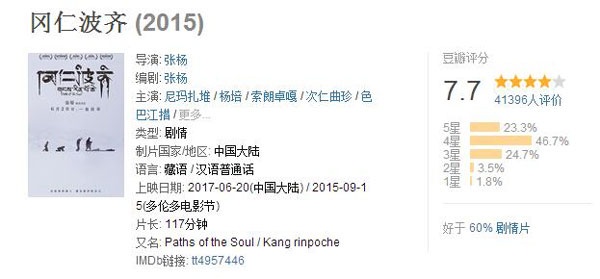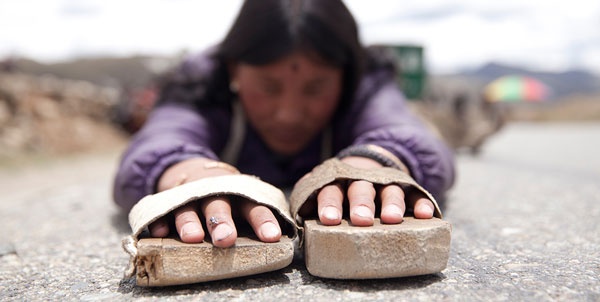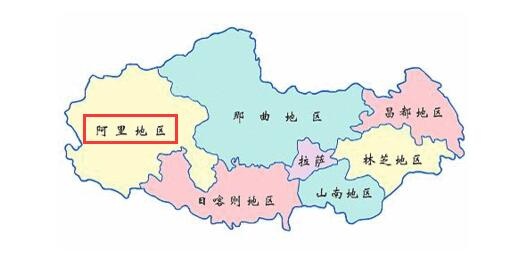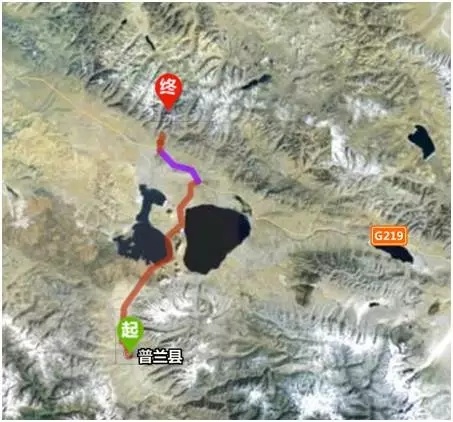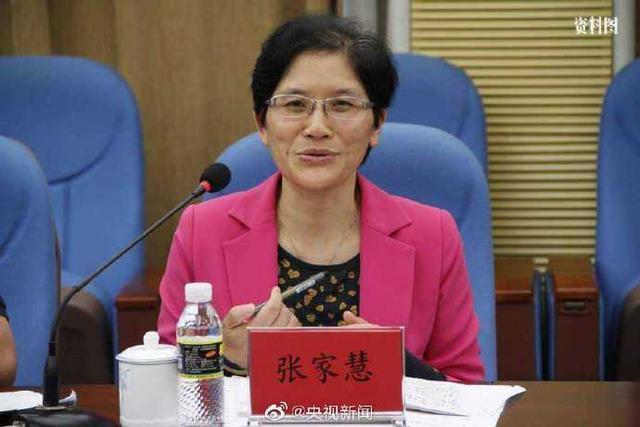Regular press conference of the National Health and Wellness Committee on May 10, 2018
Time: May 10, 2018
Venue: Press Release Hall, Building 2, National Health and Wellness Commission.
Jia Bin: Jiao Yahui, Deputy Director of Medical Administration and Hospital Authority
Wen Daxiang, Deputy Director of Shanghai Municipal Health and Family Planning Commission
Wu Xinjuan, Director of Nursing Department of Peking Union Medical College Hospital
Liu Zhefeng:
Hello, friends from the media, and welcome to the regular press conference of the National Health and Wellness Committee in May. The theme of today’s conference is to introduce the development of nursing in China. First of all, I’d like to introduce all the guests seated on the stage, Ms. Jiao Yahui, deputy director of the Medical Administration and Hospital Authority, Mr. Wen Daxiang, deputy director of the Shanghai Municipal Health and Family Planning Commission, and Ms. Wu Xinjuan, director of the nursing department of Peking Union Medical College Hospital, chairman of the Chinese Nursing Association and winner of the 43rd Nightingale Prize. Welcome to our press conference.
The day after tomorrow is the International Nurses’ Day. Nurses from all over the country give their patients care and dedication day and night, and they give them scientific care and guidance. With the comprehensive cooperation of nursing work, the comprehensive recovery of patients can be promoted. On the occasion of the International Nurses’ Day, we would also like to say hello and pay tribute to the nursing workers all over the country and our fellow nurses. We also hope that through the reports of friends in the media, the whole society can understand and pay more attention to our nursing work and show more care and love to our nurses. Let’s start today’s press release. First of all, please ask Deputy Director Jiao Yahui to introduce the development of nursing in China.
Jiao Yahui:
Good morning, friends from the media. First of all, I would like to thank my friends from the news media for their concern and support for the nursing work. On the occasion of the upcoming "5.12" International Nurses’ Day in 2018, I also take this opportunity to wish the majority of nursing workers across the country a happy holiday. This year is also the tenth anniversary of the promulgation and implementation of the nurses’ regulations. I would like to take this opportunity to briefly introduce the overall situation of the development of the national nursing cause in recent years, especially since the tenth anniversary of the implementation of the nurses’ regulations.
"Three-point treatment and seven-point nursing" is an important part of health and health undertakings, which is closely related to people’s health interests and life safety, and is of great significance for stabilizing growth, promoting reform, adjusting structure, benefiting people’s livelihood and winning the battle to build a well-off society in an all-round way. Strengthening the construction of nursing staff and promoting the reform and development of nursing career and nursing industry is an important content of implementing the strategy of healthy China, and it is also an objective requirement of establishing a health service system covering the whole population and the whole cycle.
The State Council promulgated the Nurses’ Regulations in January 2008, which was implemented on the International Nurses’ Day on May 12 of the same year. It protects the legitimate rights and interests of nurses from the legal level, clarifies the rights, obligations and practice rules of nurses, promotes the healthy development of nursing, and guarantees medical safety and people’s health. This year marks the tenth anniversary of the implementation of the Nurses Ordinance. In the past ten years, under the strong leadership of the CPC Central Committee and the State Council, governments at all levels, health administrative departments and medical and health institutions have implemented the Nurses Regulations and taken effective measures to stabilize and develop the ranks of nurses. The majority of nursing workers consciously fulfill their responsibilities and obligations, actively practice high-quality nursing services, and make great contributions to improving the health level of the whole people. Since the implementation of the "Regulations on Nurses", nursing has developed rapidly and achieved remarkable results, mainly in the following aspects.
First, the team of nurses has developed vigorously, and their quality and professional ability have been significantly improved.
By the end of 2017, the total number of registered nurses in China exceeded 3.8 million, accounting for 42.3% of health and family planning professionals. There are two important time nodes. In 2005, the first "Eleventh Five-Year" nursing plan was promulgated and implemented, and in 2008, the Nurses Regulations was promulgated and implemented. Compared with 2005 and 2008, the number of nurses in 2005 was 1.35 million. In 2008, the number of nurses reached 1.678 million, which was 181.6% higher than that in 2005 and 126.5% higher than that in 2008. The number of nurses per thousand population increased from 1.03 in 2005 to 1.208. The national medical care ratio increased from 1: 0.66 in 2005 to 1: 0.79 in 2008, and reached 1: 1.1 in 2017, which reversed the inverted medical care ratio. In 2017, the doctor-nurse ratio of tertiary hospitals reached 1: 1.54, and that of secondary hospitals reached 1: 1.46. There are nearly 800 thousand nurses engaged in nursing work at the grassroots level. According to statistics, 67% of the nurses have college education, and the level of specialized nursing has been continuously improved, which has played an important role in daily nursing work and medical service for major emergencies.
Second, the enthusiasm of nurses has been further mobilized.
Improving nurses’ working conditions and ensuring nurses’ treatment are the important contents of the Nurses’ Regulations. In the past ten years, through implementing the Nurses’ Regulations, especially in the process of deepening medical reform, aiming at the common problems in nurse management in medical institutions, and exploring the reform from identity management to post management, we have increased the incentive and publicity for outstanding nurses. At present, 79 nurses in China have won the Nightingale Medal, and many nurses have won the titles of Bethune Medal, National Advanced Worker of Health and Family Planning System and National Model Worker.
Third, the level of nursing professional technology has been continuously improved to ensure medical quality and safety.
All kinds of medical institutions at all levels and nurses provide patients with quality nursing services in accordance with the requirements of the Nurses Regulations. The concept of nursing service has changed from "disease-centered to patient-centered", and the service model has changed from cooperating with doctors to focusing on patients’ physical and mental health needs. The technical level of nursing specialty has been continuously improved, and nursing work is closer to patients, clinic and society. In 2017, high-quality nursing services have achieved full coverage of tertiary hospitals, and nearly 90% of secondary hospitals have also carried out high-quality nursing services, and patients’ sense of access to medical treatment has been significantly enhanced. According to the evaluation of the third-party effect of improving medical services, the masses are most satisfied with nursing work.
Fourth, the connotation of nursing is constantly enriched to meet the multi-level health needs of the masses.
Nursing work serves the whole process of people’s birth, aging, death and illness, and plays a role in all stages of diagnosis and treatment of patients’ diseases in acute stage, rehabilitation in chronic stage and care and care in dying stage. At present, many regions and medical institutions in China actively adapt to the changes in disease spectrum and the aging process of the population, constantly enrich the connotation of nursing specialty, gradually extend nursing services to communities and families, and provide services such as aged care, chronic disease management, rehabilitation care, long-term care and hospice care for the masses, further satisfying the diversified and multi-level health service needs of the masses.
At present, compared with the people’s diversified multi-level health needs, there are still problems of unbalanced and insufficient development in nursing work. In the next step, the National Health and Wellness Committee will fully implement the spirit of the 19th National Congress of the Communist Party of China and the spirit of the National Health and Wellness Conference, take Socialism with Chinese characteristics Thought of the Supreme Leader in the New Era as the guide, closely follow the changes of major social contradictions, pay attention to the structural reform on the supply side and improve the people’s feelings, make efforts at the same time, highlight key points, make up shortcomings, strengths and weaknesses, and accurately meet the diverse and multi-level nursing service needs of the people. First, under the guidance of implementing the strategy of healthy China, we will continue to implement the Nurses Regulations and the 13th Five-Year Plan for the Development of Nursing, strengthen the construction of nurses and promote the healthy development of nursing. The second is to issue guiding documents to promote the reform and development of nursing service industry, innovate nursing service mode, increase the supply of nursing service and vigorously promote the reform and development of nursing service industry in accordance with the principle of "government-led, diversified investment, market operation and industry management". Third, actively respond to the aging population, vigorously develop elderly care and elderly care, strengthen the construction of employees, expand social employment, and promote the rapid development of the nursing industry. Fourth, strengthen nursing propaganda, actively publicize the achievements and typical experiences in promoting the reform and development of nursing; Establish the emerging advanced nursing deeds and outstanding models, and create a good atmosphere for further promoting the healthy development of nursing cause and nursing industry in the new era.
Liu Zhefeng:
Next, please ask Deputy Director Wen Daxiang to introduce the development of nursing career and elderly nursing service industry in Shanghai.
Wen Daxiang:
Good morning, friends from the media. First of all, it is a great honor to introduce the achievements in the development of nursing in Shanghai, as well as the elderly care and long-term care work on the occasion of the tenth anniversary of the implementation of the Nurses Regulations in our country and the upcoming Nurses’ Day this year.
In recent years, the administrative departments of health and family planning at all levels in Shanghai, as well as the medical subjects and medical institutions, have fully implemented the "Regulations on Nurses" and the main tasks put forward by the national and Shanghai nursing career development plan. Shanghai has made remarkable achievements in strengthening the construction of nursing team, promoting high-quality nursing service and expanding the field of nursing service. At the same time, in order to cope with the challenge of aging population, Shanghai has continuously strengthened the management of medical care for the elderly, and gradually explored the formation of an elderly care service system consisting of institutional care, community care and home care. I will introduce the work in Shanghai from two aspects. First, I will introduce the achievements in the development of nursing in Shanghai.
From the height of building a well-off society in an all-round way and improving people’s health level, Shanghai has combined the development of nursing with the development plan of Shanghai’s medical and health undertakings. According to the spirit of the outline of the national development plan for nursing undertakings and related documents, combined with the actual development of nursing undertakings in Shanghai, it has studied and formulated the implementation plan for the development of nursing undertakings in Shanghai, and strengthened organizational leadership to ensure the effectiveness of the work. At the same time, actively promote the health and family planning administrative departments at all levels and medical and health institutions to comprehensively and thoroughly implement the provisions of the Nurses Regulations, effectively protect and safeguard the legitimate rights and interests of nurses, and standardize the practice of nursing. In this process, the nursing career in Shanghai has developed rapidly.
(1) The number of nurses has increased and the knowledge structure has been optimized.
The number of nurses in Shanghai has grown rapidly. By the end of 2017, the number of registered nurses had reached 84,000, an increase of more than 72% compared with 2008. According to the statistics of resident population, the number of nurses per thousand population increased from 2.58 in 2008 to 3.47 in 2017, and the ratio of practicing (assistant) doctors to registered nurses increased from 1.05: 1 in 2008 to 1: 1.23 in 2017. In addition, in terms of structure, the proportion of nurses with college degree or above in Shanghai’s nursing team has increased year by year. By the end of 2017, nurses with college degree or above in Shanghai have accounted for 83.54% of the total registered nurses, and a large number of highly educated and high-quality nurses have enriched the clinical front line, laying a solid foundation for promoting the development of nursing career and the progress of nursing medicine in Shanghai.
(two) the professional and technical level of nurses has been significantly improved.
Shanghai has continuously strengthened the training of clinical specialized nurses and improved the professional level of nurses. In intensive care, blood purification, emergency and first aid and other 11 key areas with high requirements for specialized nursing knowledge and skills, professional nurses’ competency training was carried out. Cultivate higher-level specialized nurses with professional development ability. At present, Shanghai has trained nearly 12,000 clinical nursing backbones. In addition, the international training of nurses has been continuously strengthened, and the training funds for nurses have been greatly increased. In the past five years, all kinds of medical institutions at all levels in the city have sent nurses abroad for training, including studying for master’s and doctoral degrees in nursing abroad, which has exceeded 10,000 person-times.
(3) The quality of nursing service has been further promoted and the quality of nursing has been continuously improved.
Since 2010, Shanghai has started the "Demonstration Project of Quality Nursing Service" and gradually promoted the deepening of this work. At present, all secondary and tertiary hospitals in the city have achieved full coverage of quality nursing services, and community health service centers are also actively carrying out quality nursing with community characteristics. Since the end of 2016, Shanghai has actively promoted the radiation of high-quality nursing resources to the grassroots, further exerted the radiation effect of high-quality nursing resources in tertiary hospitals in this city, extended high-quality nursing services, and improved the nursing service capacity of grassroots medical and health institutions in the city. There are 11 hospitals, 37 wards and 63 individuals in Shanghai who have won the titles of former National Health and Family Planning Commission, state administration of traditional chinese medicine Advanced Hospital for Quality Nursing Service, Advanced Ward and Advanced Individual. In addition, since 1996, a nursing quality control center has been established in Shanghai, and a perfect two-level nursing quality control network has been established in the urban area. The city has unified the nursing management system of various medical institutions, studied and formulated seven general nursing quality control standards and five specialized nursing quality control standards such as pediatrics and obstetrics and gynecology. At present, more than 30 nursing quality control standards in Shanghai have been included in national related standards. By establishing nursing quality control standards, establishing nursing quality information data platform and database, constructing nursing quality index system, organizing nursing management training and full coverage of nursing quality control supervision in medical institutions above the second level. Shanghai’s nursing quality and service ability have been continuously improved. Through the third-party satisfaction measurement, the average patient satisfaction in Shanghai hospitals in the past three years has been above 93%.
(D) The level of hospital nursing management and the ability of long-term nursing service have been continuously improved.
In accordance with the national requirements for deepening medical reform and nursing reform and development, Shanghai has continuously reformed and innovated nursing management system and mechanism, actively explored nursing human resource management, continuous improvement of nursing quality, improvement of performance appraisal and salary distribution, strengthened positive guidance and encouragement, fully mobilized the enthusiasm of clinical nurses, and strived to achieve scientific, professional and refined hospital nursing management. The long-term nursing service capacity of medical institutions has also been further enhanced, paying more attention to the continuous care and rehabilitation of patients. Medical institutions at all levels provide continuing nursing services by carrying out nursing clinics, organizing health education salons, home nursing and other forms, which meet the increasingly diversified health service needs of the masses and broaden the development space for nurses.
(5) Accelerate the reform of nursing education, and promote the academic exchange and discipline development of nursing.
With the goal of cultivating high-level nursing practical talents, Shanghai has carried out the training of undergraduate, master and doctoral nursing students. At present, there are 6 colleges and universities of nursing undergraduate education in the city, 5 independent nursing master’s programs and 3 doctoral programs. In the past three years, 199 masters of nursing and 20 doctors of nursing have been trained. In addition, Shanghai has continuously strengthened cooperation and exchanges with other provinces and cities in China, Hong Kong, Macao and Taiwan, as well as international nursing colleagues. By building brand academic exchange platforms at the municipal level, such as Shanghai International Nursing Conference and Shanghai International Nursing Forum, Shanghai has learned from advanced experience at home and abroad and promoted the development concept and model to be in line with international standards. In terms of the construction of nursing discipline, Shanghai regards nursing discipline as the most important discipline in the city, and it is also an important and weak discipline that needs to be supported. The municipal finance provides special funding, and medical institutions at all levels have set up special funds for nursing, or regard nursing discipline as the key specialty of hospitals, so that the status of nursing discipline has been continuously improved.
Second, the situation of elderly care and long-term care in Shanghai
As we all know, Shanghai is one of the earliest cities in China with an aging population, and the social speed of aging population in Shanghai is very fast and the degree is very high. By the end of 2017, the elderly over 60 accounted for 33.2% of the registered population in Shanghai, and the elderly aged 80 and over accounted for 5.5% of the total. Therefore, in order to meet the needs of urban aging care services, under the principle of paying equal attention to government-led and market-driven and optimizing the distribution of regional health resources, Shanghai has continuously strengthened the management of medical care for the elderly, and the ability and level of medical care for the elderly have been significantly improved.
(A) to strengthen the elderly medical care service system.
Since the "Twelfth Five-Year Plan", Shanghai has continued to implement the policy of increasing the number of beds for elderly medical care. Through the combination of stock consolidation and moderate development increment, the number of nursing beds for the elderly will be gradually increased. On the one hand, the existing treatment beds in public secondary medical institutions and community health service centers are gradually transformed into nursing beds. In 2013, Shanghai issued the "Implementation Opinions on Setting Elderly Care Beds in District and County General Hospitals", requiring that all district general hospitals set no less than an average of 50 elderly care beds. For district general hospitals with elderly care beds, a one-time subsidy of 10,000 yuan per bed was given through the Shanghai Welfare Lottery Public Welfare Fund. On the other hand, encourage and support the establishment of nursing institutions for the elderly and encourage diversified development of nursing stations. In 2016, Shanghai has issued the "Shanghai Nursing Station Management Standard" and the "Notice on Encouraging Social Forces to Develop Nursing Stations" to promote the extension of medical care services to communities and families and meet the people’s growing demand for basic medical care services. In 2017, Shanghai studied and formulated the "Thirteenth Five-Year Plan for the Development of Elderly Medical Care Service System in Shanghai", which further explicitly requested to increase the supply of elderly care service resources in this city and improve the level of elderly medical care services. By the end of 2017, there were 26,599 beds for elderly medical care in the city. There are 46 nursing homes in the city, of which 9 are run by the government and 37 by the society, with 7913 beds. There are 108 nursing stations in the city, of which 9 are run by the government and 99 by the society.The number of elderly medical nursing beds set up by social capital in the city has reached 6051, accounting for 22.7% of the total.
(2) Explore the establishment of a long-term care insurance system.
In 2013, Shanghai has explored the pilot work of the medical care security plan for the elderly. Since January 2017, Shanghai, as one of the first 15 cities in China to carry out long-term care insurance pilots, has piloted the long-term care insurance system in Xuhui, Putuo and Jinshan, and achieved initial results. According to the deployment of the Shanghai Municipal Party Committee and the Municipal Government, the pilot project of long-term insurance protection will be carried out in the city from January 1, 2018. For the long-term disabled people who have reached a certain level of nursing needs after assessment, providing services or financial guarantee for their basic life care and medical care closely related to their basic life not only provides urgently needed long-term nursing services for the long-term disabled elderly, but also effectively reduces their economic burden. According to the unified division of labor in the whole city, the Shanghai Health and Family Planning Department will make great efforts to promote the formulation of evaluation standards, carry out the management of evaluation institutions, the training of evaluators and the quality management of evaluation together with the people’s society and the civil affairs department, strengthen the construction of service institutions such as social nursing stations, strengthen the construction of evaluators and nursing staff, and cooperate with relevant departments to study and formulate relevant supporting policies. By the end of 2017, Shanghai has carried out more than 80,000 evaluations in the city according to the evaluation standards.
(three) to further promote the family doctor system and the combination of medical care.
Shanghai has continuously promoted the construction of the family doctor system, actively explored the signing of "1+1+1" medical institutions, and made the elderly group the focus and priority object of signing services. As of April 23, 2018, the number of "1+1+1" contracted permanent residents in the city has reached 3.92 million, including 2.77 million elderly people over 60 years old. The signing rate of elderly people over 60 years old exceeds 60%, and 73% of the contracted residents’ outpatient visits occur in the "1+1+1" medical institution portfolio. Among them, 52% of the contracted clinics took place in the community health service centers with which they signed contracts. In order to further promote the combination of medical care and nursing care, Shanghai regards community health service centers as an important platform to provide health services for the elderly. At present, the workload of community health service centers for the elderly accounts for about 60% of the total workload, and the service rates of community health service centers with pension institutions and foster care institutions in the city have achieved full coverage.
During the "Thirteenth Five-Year Plan" period, Shanghai will accelerate the construction of a healthy city and strive to become an Asian medical center city. Shanghai’s nursing work will also fully implement the spirit of the 19th Party Congress, implement the health and health work policy in the new era, and further strengthen the nursing team around the overall requirements of the China Nursing Development Plan (2016-2020) and the Shanghai Nursing Development Implementation Plan (2017-2020). Here, finally, I would like to take this opportunity to express my high respect and holiday greetings to angels in white people all over the country. Thank you.
Liu Zhefeng:
Next, please ask Director Wu Xinjuan to introduce the work progress from the front line in deepening the field of quality nursing.
Wu Xinjuan:
Dear media friends, good morning, first of all, I am entrusted by President Zhao Yupei, and on behalf of Peking Union Medical College Hospital, I would like to express my heartfelt thanks to all sectors of society who have long cared for and supported the development and construction of Union Medical College. Below I will briefly introduce some measures and achievements of Peking Union Medical College Hospital in deepening quality nursing service and enhancing patients’ sense of acquisition.
First, the general situation of hospitals and nursing work
Peking Union Medical College Hospital is the national guidance center for the diagnosis and treatment of difficult and severe diseases designated by the National Health and Wellness Committee. It has been ranked first in the "Best Hospital Ranking in China" published by the Institute of Hospital Management of Fudan University for eight consecutive years. In another three years, Peking Union Medical College Hospital will celebrate its centenary birthday. Under the cordial care of the party and the country, it will improve patient satisfaction by "treating patients like relatives; Under the guidance of the concept of "treating colleagues like family members and improving employee well-being", the hospital continues to develop at a high speed. Now there are 2,005 open beds with a total construction area of 530,000 square meters. In 2017, there were 3.7 million outpatient visits, 99,000 hospitalizations and 52,000 surgeries, with an average hospitalization day of 6.7 days.
Nurses are the backbone of hospital development and construction. There are 1806 nurses in the hospital, including 1775 front-line nurses, accounting for 98.3%; Bed protection ratio is 1: 0.9; Nurses with bachelor degree or above accounted for 72.8%. Xiehe Nursing has established a good reputation in the hearts of ordinary people, ranking among the best in all previous national and Beijing third-party patient satisfaction surveys, and won the honors of National March 8th Red Flag Group, Women’s Civilized Post, and "National Excellent Nursing Service Outstanding Performance Group", and won the Top Ten Value Cases of Nursing in the National Challenge Competition of Medical Service Improvement Action Plan for three consecutive years.
Second, do a good job in top-level design, and continue to promote the power of the whole hospital.
In 2010, the hospital took the lead in developing high-quality nursing service in the whole country. Dean Zhao Yupei attached great importance to this work, and always listed it as a "top-ranking project", and established a cooperative communication mechanism among various departments to solve the difficulties and problems in nursing work. Continue to exert strength in all aspects such as people and property. In recent five years, more than 400 new nurses recruited by our hospital have all been assigned to the clinical front line, and nearly 400 nurses have been employed by the hospital to assist nurses, and the logistics support system has been continuously improved and perfected, such as visit management, field service, equipment inspection, drug delivery, etc., all of which are undertaken by the logistics support system, so that nurses can devote themselves to clinical work wholeheartedly. Continuously improve nurses’ welfare benefits, increase the inclination in performance bonus and night shift fee, set up three types of special performance allowances for nursing, implement paid vacation system, provide dormitories for nurses outside Beijing and suburban counties, actively apply for public rental housing for young people and study and study opportunities abroad, etc., and increase nurses’ happiness.
According to the principle of "top-level design is unified with batch promotion, and tradition is unified with reform and innovation", high-quality nursing service is promoted efficiently. In 2011, 100% ward coverage of quality care was achieved; In 2012, the hospital coverage of ward-outpatient-auxiliary departments was realized; After 2013, we will continue to consolidate and improve, focusing on the post management, personnel training and quantitative assessment of nurses, so as to continuously improve the nursing service ability and refined management level.
Third, continuously improve the service level and increase the people’s sense of gain.
Advocate the service concept of "six ones and six haves" in the whole hospital, carry out the theme activities of "cleaning and quietness" to optimize the medical environment and the activities of changing nurses’ "four hearts", and strengthen the detailed service and humanistic care, such as implementing the responsibility system of first inquiry in outpatient department, seeing doctors in different periods, carrying out voluntary service and setting up special windows for the elderly to facilitate patients to see a doctor. The emergency department took the lead in establishing five-level triage standards, red card procedures for emergencies, and evaluation standards for the transfer of critically ill patients, and opened green channels for multiple diseases to ensure priority treatment for critically ill patients. Wards, operating rooms, etc. fully implement the responsibility system of holistic nursing, establish a one-to-one relationship between nurses and patients, and realize the whole process and seamless nursing of patients from admission, hospitalization, surgery and discharge. Enrich health education and expand extended nursing. Disseminate health knowledge to patients and the public through diversified propaganda manuals, videos, WeChat official account, health lecture halls and popular science lectures; 100% wards have carried out continuous nursing services with distinctive specialties, including telephone or APP follow-up, patients’ meeting, etc., so that the nursing objectives of "close to patients, close to clinic and close to society" can be fully implemented in Xiehe.
Fourth, continuously optimize the quality of nursing and increase the trust of the masses.
Taking system construction as the center to ensure nursing quality and safety. Xiehe Nursing has established a set of nursing system that meets the requirements of modern hospital management characteristics, and this achievement won the first prize of 2017 Hospital Science and Technology Innovation Award of China Hospital Association. Among them, the core safety management systems such as Clinical Nursing Routine and Quality and Safety System require every nurse to master them skillfully and strictly implement them to ensure standardization and homogenization of work. Focusing on the construction of specialized subject, creating excellent nursing quality. As a national center for diagnosis and treatment of difficult and severe diseases and the first batch of national key clinical nursing specialty projects, Concord has continuously improved the nursing level of difficult and severe patients. In recent five years, a total of 187 nurses have been sent abroad for further study, and more than 300 specialized nurses have been trained in 17 specialties or special technical fields to be responsible for the nursing and consultation of difficult and severe patients in the hospital. Nine specialized nursing teams have been set up, and more than 600 specialized nursing backbones have been trained. They are based on clinical practice and go deep into the community, which has promoted the nursing level of hospitals and regions. Eight specialized nursing clinics were opened to provide patients with professional consultation and specialized treatment. In 2017, in order to accurately meet the national second child opening policy, breast-feeding clinics and female pelvic floor rehabilitation clinics were newly opened, serving 9,937 pregnant women in 2017 alone. At present, the nursing level of seven specialties in Concord has reached or exceeded the domestic or international advanced level. Through the formulation of standards, norms and consensus, the quality of nursing in China will be promoted.For example, our hospital has taken the lead in formulating the Technical Operation Standard of Intravenous Therapy and Nursing, the Consensus of Hospital Transport Nursing for Critical Patients, and the Consensus of Nursing Experts on Common Complications of Bedridden Patients, which has fully played the role of radiation and driving of Concord.
The party, the government and the masses have given many honors to Concord and Concord Nursing, which we cherish all the more. Standing in the new era, Concord will base itself on the new needs of the people, constantly explore and innovate, strive to provide better all-round and life-cycle nursing services for the people, and make new and greater contributions to realizing the grand blueprint of healthy China. thank you
Liu Zhefeng:
Thank you, Director Wu. That’s all for the release session, followed by the question session. As usual, please inform your media before asking questions.
Health News reporter:
My question is that nurses are playing an increasingly important role in nursing work under the new situation of implementing the healthy China strategy and actively coping with the aging population in China. May I ask Director Jiao, what are the plans of the National Health and Wellness Committee in accelerating the development of aged care and aged care?
Jiao Yahui:
Thank you for your question. At present, we are facing a great challenge, that is, the problem of aging population. In China, according to the statistics of the National Bureau of Statistics, there are about 240 million elderly people over 60 and 160 million elderly people over 65, and some of them are disabled and semi-disabled. If families have such disabled and semi-disabled elderly people, the burden is very heavy for families. On the one hand, it is an economic burden. In fact, the greater burden is to care for these elderly people.
The National Health and Wellness Committee will start with solving the most urgent medical care problem for the elderly and is studying relevant policies. In the next step, on the one hand, we will continue to consolidate the achievements made in nursing, implement the "Thirteenth Five-Year Plan" for nursing, continue to strengthen the construction of nurses, expand quality nursing services, and gradually meet the health needs of patients. Although the number of nurses in China has reached 3.8 million at present, the gap between supply and demand is still relatively large, and the contradiction between unbalanced and insufficient development and social needs is more prominent in the nursing field. Therefore, the next step is to do a good job in elderly care and elderly care, focusing on solving several problems. One is to solve the problem of who will take care of it. According to the "Thirteenth Five-Year Plan", by 2020, the number of nurses in China will reach 4.5 million. Now we also propose to extend nursing services from hospitals to communities and families. On the one hand, we should vigorously develop the number of nurses, on the other hand, we should vigorously strengthen the team building of elderly nurses. Therefore, to develop medical care for the elderly, we must first solve the problem of who takes care of it.
Second, we need to solve the problem of who to take care of. We now have 240 million elderly people aged 60, including health of the elderly, some elderly people with chronic diseases, and disabled and semi-disabled elderly people. We are formulating standards for the evaluation of elderly care. Just now, Director Wen also introduced that evaluation standards have been issued in many places, that is, whether the elderly can take care of themselves, whether they can take care of themselves in part or not, and they need to be evaluated. Through evaluation, it is decided whether these elderly people need institutional care. In this different way, he may pay through different channels. In medical institutions, he may need to be paid by medical insurance, and some in institutions or communities may be paid by long-term care insurance. There are also some ways to solve the problem of paying part of the expenses at home by developing commercial insurance models. This is to solve the problem of who to care for.
The third is to solve the problem of taking care of there. At present, some elderly people in the country are receiving rehabilitation in medical institutions, as well as nursing care for chronic diseases, as well as some nursing centers, nursing homes and nursing stations. There are also many elderly people receiving some medical care here, and there are also some nursing homes. Another policy that we are vigorously promoting is the well-known combination of medical care and nursing care. Some elderly people are in old-age care institutions, and we encourage old-age care institutions to set up some medical institutions to solve the problem of combining medical care and nursing care. In addition, our primary medical and health institutions and our community health service centers provide community care and home care for the elderly by signing contracts, setting up family beds and providing on-site services. There are also some elderly people who need our standardized and trained nursing staff to provide some home care services at home. Judging from the national conditions of our country, institutional care is not our main direction. In the future, the main body and main mode of care for these elderly people should be the community and family, especially in the community. Now many places are exploring mutual support for the elderly. In cities, there are such concentrated apartments and communities for the elderly, and in rural areas, there are "happy homes" for the elderly as promoted by civil affairs departments, as well as mutual support for the elderly. In the vicinity of village clinics, village doctors provide daily health services. This is the solution.
The fourth is to solve the problem of who will pay for the care, that is, to raise funds. We know that when it comes to long-term medical care, learning from the experience of other countries, such as Japan, has done a very good job in this regard. Besides medical insurance, there is also long-term care insurance, which is to solve the problem of long-term medical care for the elderly in Japan. Our country is led by the human and social departments, and some cities in the country are also selected to do the pilot project of long-term care insurance, which solves the problem of long-term medical care cost burden to some extent. Of course, the mode of each place and the channels for raising funds are not exactly the same.
Besides long-term care insurance, we also think that commercial insurance should be vigorously developed in China, which is also a very important source of financing. Through some commercial insurance companies, insurance products for long-term care and care of the elderly can be developed to play a supplementary role. So I think, in the next step, we should focus on solving these four problems in medical care for the elderly. Now we are also actively studying relevant policies, and we are also preparing to work with relevant departments to formulate relevant guiding documents, so as to vigorously promote the solution of our elderly medical care problems in the next step. Thank you.
Xinhua News Agency reporter:
My question is for Director Wu Xinjuan. Excuse me, from the perspective of your own work, what role do you think nursing can play in ensuring the health service of ordinary people throughout their life cycle? What do you think of Peking Union Medical College Hospital’s fine and professional management of nursing team? Thank you.
Wu Xinjuan:
It should be said that nurses are the closest group to patients, and the whole process of human birth, aging, illness and death is inseparable from nurses. Therefore, the level of care is good or bad, which directly affects the patient’s safety and medical experience. In the life-cycle health service of the people, it should be said that nurses are indispensable. With the arrival of China’s aging society and the change of disease spectrum, nursing is expanding both in connotation and extension. In order to improve the nursing level, I think we should do it from two aspects: first, improve the service level; The second is to improve professional ability. It is necessary to strengthen the construction of nursing connotation and the training of nurses themselves, to provide patients with warm care, and to improve the professional and technical level of nurses. At present, China has trained many specialized nurses, who have played a very important role in solving difficult and serious problems.
In addition, there are more and more chronic diseases, such as cardiovascular and cerebrovascular diseases and diabetes, and the incidence rate is getting higher and higher. Therefore, nurses should also play an important role in popular science propaganda and health education. Yesterday, the Chinese Nursing Association held a celebration meeting for the International Nurses’ Day, which was also the launching ceremony for the popularization of health science in China. More than 3.8 million nurses in China should be very good propagandists of health science. In the past, nursing service was disease-centered, but now it is going to be human health-centered. To make the public healthier, it is very important to do a good job in disease prevention and develop a healthy lifestyle. In the hospital, we provide health education for patients at all stages, such as health guidance before operation, after operation and before and after discharge. In addition, various forms of continuing nursing services have been carried out, because many patients have not fully recovered when they leave the hospital. In this case, the guidance of nurses needs to be extended to families or referral medical institutions, thus reducing the rate of re-visit after discharge.
On the other hand, it is how to sink the quality nursing service resources. Large hospitals should play a very good role in transferring advanced concepts and technologies to primary medical institutions. At present, we have also carried out a series of work such as aiding Xinjiang, Tibet and Mongolia, and carried out accurate assistance according to the needs of grassroots and remote areas. At the same time, as a national training base, Peking Union Medical College Hospital trains more than 800 advanced nurses for the whole country every year, which plays a very good role in promoting radiation. I also hope that through our efforts, we can jointly promote the construction of a healthy China. Thank you.
Liu Zhefeng:
Thank you, Director Wu. Please keep asking questions.
Reporter of the People’s Political Consultative Conference:
My question is for Director Wen in Shanghai. When you introduced the materials just now, you said that from the end of 2016, our nursing work and high-quality nursing resources in Shanghai began to tilt to the grassroots. What effect has it achieved now? What is the original intention of our work? Thank you.
Wen Daxiang:
Thank you for your question. With the aging of the population, chronic diseases are on the rise. Grassroots medical and health institutions should play a more important role in chronic care, disease rehabilitation, home care and pre-hospital first aid. Therefore, in order to continuously and deeply promote high-quality nursing, implement the requirements of graded diagnosis and treatment, and further improve the service capacity of primary care in Shanghai, from the end of 2016, we have actively explored the sinking and radiation of high-quality nursing resources in tertiary hospitals to primary care, with the main purpose of improving the overall service capacity of primary care. There are various forms. At present, we help and drive primary medical and health institutions to improve their nursing service capabilities, including nursing management capabilities and clinical nursing technical service capabilities, through professional skills training, thematic nursing rounds, consultation with suspected and particularly difficult nursing experts, clinical nursing and advanced nursing management, etc., and gradually hope that primary nursing capabilities and our hospitals at the next higher level will develop in the same direction.
From the work that has been carried out and some achievements have been made, I will introduce them to you through some data. In 2017, Shanghai tertiary hospitals organized 169 special trainings, with nearly 7,000 primary nursing staff trained and 91 community nursing rounds, with more than 1,000 participants. In addition, 214 nursing consultations were organized and 240 nurses from community health service centers were accepted. Through these specific practices, the sinking of high-quality nursing resources in tertiary hospitals has been effectively realized, the core competence of nursing professional care in primary medical and health institutions has been enhanced, and the balance of medical and nursing resources utilization has been promoted, so that elderly patients and chronic patients can get high-quality and continuous nursing care.
At the end of 2017, Shanghai put forward the implementation opinions on strengthening the construction of medical complexes in this city. In the next step, through the construction of medical complexes, including the construction of regional medical centers and the construction of specialist alliances, the focus of nursing disciplines will be included in the construction of these medical complexes, so as to promote the further sinking of high-quality resources and play a better role in radiation. Thank you.
Liu Zhefeng:
Thank you, director Wen. Due to time, today’s press conference is over. Thank you.

